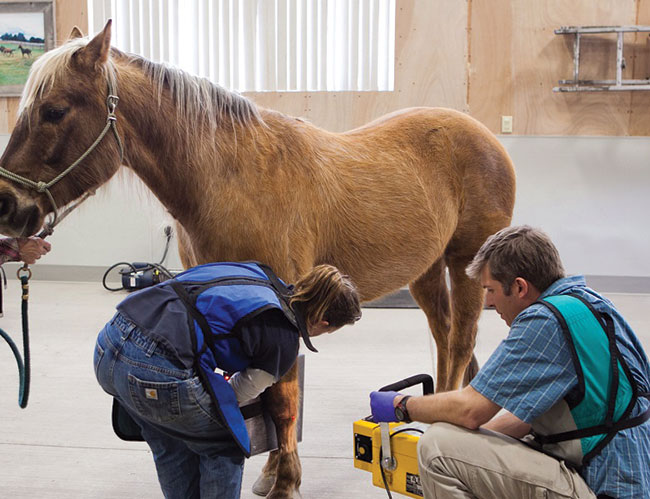By Daniel H. Grove, DVM

Veterinary medicine parallels human medicine in a lot of ways. The way it evolves is a major one. A hundred years ago, the doctor or veterinarian would examine their patient and give a diagnosis and decide a course of treatment. Sometimes the patient would get better and sometimes not.
Today, you will find medicine is much more involved than that. Research has discovered so many new problems, ways to diagnose them, and ways to treat them. As all of these things are discovered and worked out, it changes how we examine, diagnose and treat our patients. We all appreciate that our medicine and results are better, but what we do not always appreciate is the costs associated with this higher quality of medicine. Let’s look at an example of a condition in horses that has changed significantly over the years in terms of diagnosis and treatment and maybe gain an appreciation for how and why things have improved, but also cost more, navicular disease.
In the past, if a horse had a lameness, it blocked out to the heel area, and we saw some changes on the radiographs (Xrays), it would likely be diagnosed as having navicular disease. The veterinarian would prescribe some medications, make some shoeing recommendations and some horses would improve and some would not. Those that did not, along came a surgery to cut the nerves to the heel area and this would improve most horses, some for years, some others for only months. Research is done and along come some better diagnostic tools such as ultrasound, computed tomography (CT) and magnetic resonance imaging (MRI). Now navicular disease has three different possible manifestations, when you block the heel area, you may also be blocking problems in other structures, such as the deep digital flexor tendon, a collateral ligament, or even the coffin joint. Also, the treatments have changed and are costing quite a bit more.
So, in our example above, we have gone from thinking one thing to now a multitude of possibilities. In order to properly treat the problem, we need to know what the problem is. We need those additional diagnostic tools in order to attempt to fix the correct problem and get your horse back into work and you back in the saddle. Our medicine has improved but in order for us to get it right without “winging it”, we need to gather more information. Unfortunately, this makes our practice of medicine cost more as we have to do more.
Well, what if I want you to make your best guess and go with it? We often times do have to compromise on what tests we can do and work within the financial constraints of what our horse owners can afford. We do have to make some educated guesses and see if we can get it to work with the treatment we try. Sometimes we are successful and sometimes not. Remember, medicine is always changing and so is your doctor or veterinarian. Hopefully, this gives you some insight as to why as it changes, so does the cost of it.
–Dan
Leave a Comment
All fields must be filled in to leave a message.